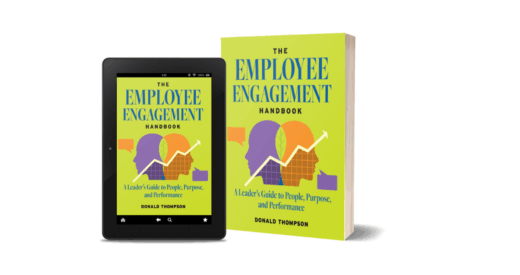U.S. manufacturing needs more people.
Although this industry currently employs close to 13 million American workers, current data shows that U.S. manufacturing firms have nearly 500,000 job openings today. And experts predict there could be as many as 2.1 million unfilled manufacturing jobs by 2030. Given the typical ratio of managers to staff — and the current positions that are open today — it’s safe to assume that most of these openings will be for frontline professionals.
With that in mind, how can U.S. manufacturing start to solve its current challenges, better meet market demand, and improve business outcomes? The answer is to integrate diversity, equity, and inclusion (DEI) as a strategic tool. Here, I’ll show you how DEI makes a difference to the U.S. manufacturing industry in particular.
Top challenges in the U.S. manufacturing industry
The most recent National Association of Manufacturers (NAM) Manufacturers’ Outlook Survey found that “attracting and retaining a quality workforce” is one of the manufacturing industry’s top challenges. In fact, 78.7% of respondents said they have open positions they are struggling to fill. And, roughly ⅓ of the manufacturers who were interviewed say they were forced to turn down business opportunities due to their inability to find sufficient talent.
At the same time, the manufacturing industry is facing a variety of hurdles to hiring and retaining workers. Three of the biggest barriers are:
- The industry has an image problem. A study by the Fabricators and Manufacturers Association found that 52% of U.S. teens expressed little or no interest in a manufacturing career. Similarly, the National Association of Manufacturers and the Manufacturing Institute report that “only 3 in 10 parents would consider guiding their child toward a career in the field.”
- The work environment isn’t as appealing as other industries. One main reason manufacturers are struggling to attract new candidates is that the typical frontline manufacturing professionals’ schedule is not as flexible as many of the hybrid and remote work options that have sprung into existence over the last 18 months. Schedule and workplace flexibility are benefits that many, many people want, especially Millennials, Gen Zers, and women with children. Most notably, research has shown that women with children are nearly twice as likely to leave the industry as men, and the frontline workers’ schedule is one big reason why.
- The workforce isn’t very diverse. U.S. manufacturing has historically been White- and male-dominated. In fact, according to U.S. Department of Labor statistics from 2017, 71.5% of manufacturing employees are male, and 79.9% are White. Non-white workers and women workers have traditionally not been recruited or felt included in frontline manufacturing culture.
Diversity, equity, and inclusion as a tool for solutions
For all of these reasons, the manufacturing industry must commit to diversity, equity, and inclusion (DEI) or risk falling farther and farther behind. As a diversity expert, of course that’s my personal opinion, but it’s also the professional advice of the 2021 Manufacturing Talent report, which states that “manufacturing’s future depends on diversity, equity, and inclusion.” Why? Because a full 63% of the more than 800 manufacturing organizations they surveyed link the business benefits of DEI to an increased ability to attract, retain, and develop talent.
Multiple leaders and C-suite executives in the U.S. manufacturing industry also agree. As Leah Curry, president of Toyota Motor Manufacturing, Indiana, recently testified to the Senate Subcommittee on Employment and Workforce Safety, “We cannot overstate the importance of intentionality around bringing historically underrepresented people into STEM careers.” Stephanie Neil, Editor in Chief of Automation World, also speaks to that point, saying “we have an enormous problem in manufacturing in the form of a skills shortage—from operators to engineers. We as an industry need to do our part to attract more women, minorities, and Millennials to the manufacturing workforce. That requires a shift in attitude and an overhaul to the current corporate culture.”
Many manufacturing firms have already launched strategic DEI initiatives. Others are at the starting line. From our perspective as DEI experts, there are three main areas where all manufacturing firms need to focus and take action on DEI:
- First, Leverage DEI in recruiting and hiring. America’s workforce is growing more demographically diverse every year. By embracing diversity, manufacturing firms can expand their success in recruiting and hiring new workers from a much broader and more diverse talent pool. In short, it makes good business sense to make yourself attractive to a wider range of frontline professionals. Actively promoting a commitment to DEI in your recruiting materials and interviews will improve a manufacturer’s appeal to job applicants and help change the perception of the industry as more welcoming and tuned in to what workers want.
- Second, involve everyone in DEI training — including frontline professionals. Most manufacturers already underway with DEI recognize that the commitment must start at the top. They’ve made a good start by providing training to their boards, executives, and top managers. But, one common mistake we see is that many large businesses exclude their frontline workers from DEI training. This strategy misses the mark in a big way. The vast majority of their workforce (and job openings) are for frontline personnel. DEI will not take hold if the majority of the workforce is left out. Plus, manufacturing requires great teamwork. A diverse group of frontline professionals needs to accept, respect, trust, and communicate effectively with each other in order to do their best work. This is where DEI training really delivers better business outcomes around productivity, problem solving, and collaboration. That’s why it is equally important — if not more important — for manufacturers to provide DEI training to their frontline professionals in addition to their leadership teams.
- Third, integrate DEI to all aspects of your operations. One-off training programs alone will not create a culture of inclusion. Manufacturers need to walk their talk on a day-to-day basis by establishing policies and practices that address discrimination, unconscious biases, and micro-aggressions. In other words, managers need to work as inclusive leaders and models of excellence. Executives should add DEI criteria to manager performance evaluations, or tie DEI goals to personal incentives for managers and executives.
- Last but not least, manufacturers should consider forming employee resource groups (ERGs) for their employees. For instance, consider groups that support women workers, Black workers, Latinx workers, LGBTQ+ workers, workers who are family caregivers, and more. Particularly in manufacturing, employees tend to identify with groups of co-workers based on their shifts, job or trade classifications, or union affiliations. This may leave some workers feeling left out. ERGs can help everyone feel supported and included in the culture of your workplace.
When manufacturing firms commit to DEI and live these values through their day-to-day actions, the benefits are substantial, including increased productivity, performance, and profitability. Studies have proven that diverse teams have more problem-solving capacity and perform better work, more efficiently. In sum, DEI proves time and time again that it has a direct, positive impact on business performance and innovation, while providing a competitive edge financially.
But in the end, it all comes back to people. In an industry that is struggling to find and hold on to high-quality frontline professionals, DEI will help change the perception of manufacturing and its ability to attract and retain a talented workforce. Diverse frontline workers will be more likely to sign on, be productive, stay loyal to the industry, and grow into veteran company leaders over time.






